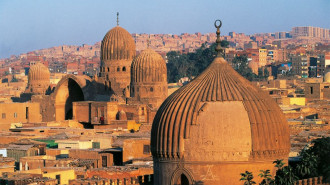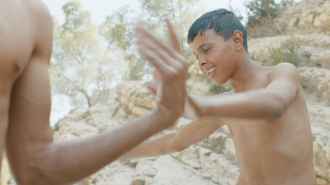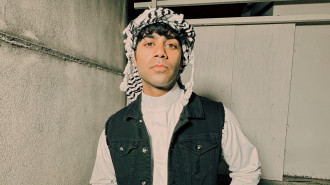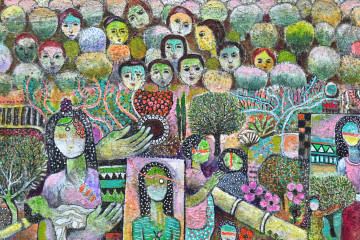
Nabil Anani and the evolution of the Palestinian landscape

There is a beautiful artwork called Eye on Jerusalem on the virtual walls of Nabil Anani’s latest online exhibition by Zawyeh Gallery called Selected Works by Nabil Anani, from April 2 to September 15.
It’s an acrylic on canvas, and it represents a pensive woman dressed in red and blue, with a white veil on her head.
The landscape has soft pastel colours that might remind the viewer of the Fauves — the group of early 20th-century painters — as well as Gauguin. The scene communicates peace and balance.
It takes a very special kind of stubbornness to keep seeing beauty, love, and harmony when the place you are living in seems ridden with obstacles.
Is it possible to inhabit the direst circumstances, where everything seems less than ideal, where bypass roads, roadblocks, walls, and watch towers remind you continuously of the painful occupation, and still keep seeing beauty all around you?
"[Nabil Anani's] canvases have always presented a Palestinian landscape without disruptions, a well-tended natural scenery, with no trace of the ever-increasing Israeli settlements"
For artist Nabil Anani, the answer is positive. The landscapes of his paintings draw as much from memory than from imagination and signal a spirit that refuses to be defeated by nasty forces, that don't allow his imagination to be colonised and occupied.
His canvases have always presented a Palestinian landscape without disruptions, a well-tended natural scenery, with no trace of the ever-increasing Israeli settlements.
It seems that the artist dreams up a utopian Palestine for all his people in an attempt to capture a moment in the future or protest against the destruction of the land and the livelihood of its people.
His body of work as a whole offers a vision of a better future, where Palestinians can feel safe in their own land, and can freely move in the country.
We know Nabil Anani as one of the most prominent Palestinian artists and one of the founders of the contemporary Palestinian art movement.
He has always been active in growing the local art scene, by being one of the co-founders of the Palestinian Art Association in 1975, as well as the Al-Wasiti Art Centre in Jerusalem in 1993. He also played a major role in establishing the first International Academy of Fine Arts in Palestine.
Anani was just 12 years old when he discovered his passion for art, and in interviews, he recounts finding himself sketching and doodling at the book’s margins during other lessons with a pencil or pen.
Although it wasn’t easy to access art books, he heard about Italian Renaissance artists such as Michelangelo and Raphael and was much inspired when he happened to see their artwork in magazines, which back then were quite rare to find.
In 1965, his uncle introduced him to the well-known artist Ismail Shammout, the first person he could start a conversation about art with, and his passion grew from there.
In the 60’s he moved to Egypt to study art, as the country was the major centre of culture and education, having inspiring teachers such as artists Hamed Ewais, Mostafa Abdel Moity, and Hamed Nada.
His first subjects of interest were Palestinian villages, as he drew from one of the happiest places in his memory, his playful, wonder-filled childhood he experienced in the Halhul village.
Ziad Anani — founder of Zawyeh Gallery, as well as Nabil Anani's son — decided to set up the exhibition in a virtual form to reach a wider audience.
“With today's technology, viewers can access the exhibition from home using their phones or tablets, almost as if they were seeing the artwork in person,” says Ziad Anani. "Also, virtual exhibitions are much more cost-effective compared to physical exhibitions. We've already had several virtual exhibitions, and they have all been incredibly successful.”
Eye on Jerusalem is part of Nabil Anani’s ongoing series In Pursuit of Utopia which brings a fresh level of texture, composition, and beauty.
The canvas from the series incorporates natural materials like straw and dried flowers, all gathered from the Palestinian land. The outcome is stunning and mesmerising.
“Nabil has been painting landscapes since the early seventies, but there has been an interesting evolution in his work over time. Previously, his focus was not only centred around the land but also on the people which he is very well-known for,” explains Ziad Anani.
Experimentation with different media and using intense, vibrant colours remain methods that distinguish Anani’s style. In this series, he uses mixed natural media, such as straw, spices, dry flowers, and plants experimenting with colour and texture.
The result is a distinct surface and memorable feelings that carry us to Palestine despite all the borders. For this exhibition, in particular, Anani integrates folkloric motifs and colours of the Palestinian flag in his landscapes.
“Personally, I find Nabil's landscapes incredibly beautiful, and if you see his works from 2011 until today, you'll notice a significant shift,” notes Ziad. “Nabil enjoys experimenting with different mediums, and from 2011 to 2014, he explored the use of hot dry wax, which added a very rich texture to his paintings.”
To Ziad, Nabil’s artistic legacy is characterised by his pioneering spirit, his dedication to his Palestinian heritage, and his ability to convey the Palestinian narrative through his work.
His influence can be seen in the works of emerging artists and the increased recognition and appreciation of Palestinian art on a global scale: “Anani's contributions have not only enriched the local art scene but have also raised awareness about Palestine globally,” he says.
Ziad believes that Nabil’s vision of a better future for present-day Palestine can play a significant role in driving change: “This vision can be related to politics, economics, art, culture, and creative thinking! It can be anything!” concludes the gallerist.
“I have strong faith in the young Palestinian generation and I believe that there will be a significant change that will positively impact Palestinian society, culture, and economy in the near future. It is coming, without a doubt!”
Naima Morelli is an arts and culture writer with a particular interest in contemporary art from the Middle East, North Africa and the Asia-Pacific region. She is also the author Arte Contemporanea in Indonesia, un’introduzione and The Singapore Series: a contemporary art reportage.
Follow her on Twitter: @naimamorelli


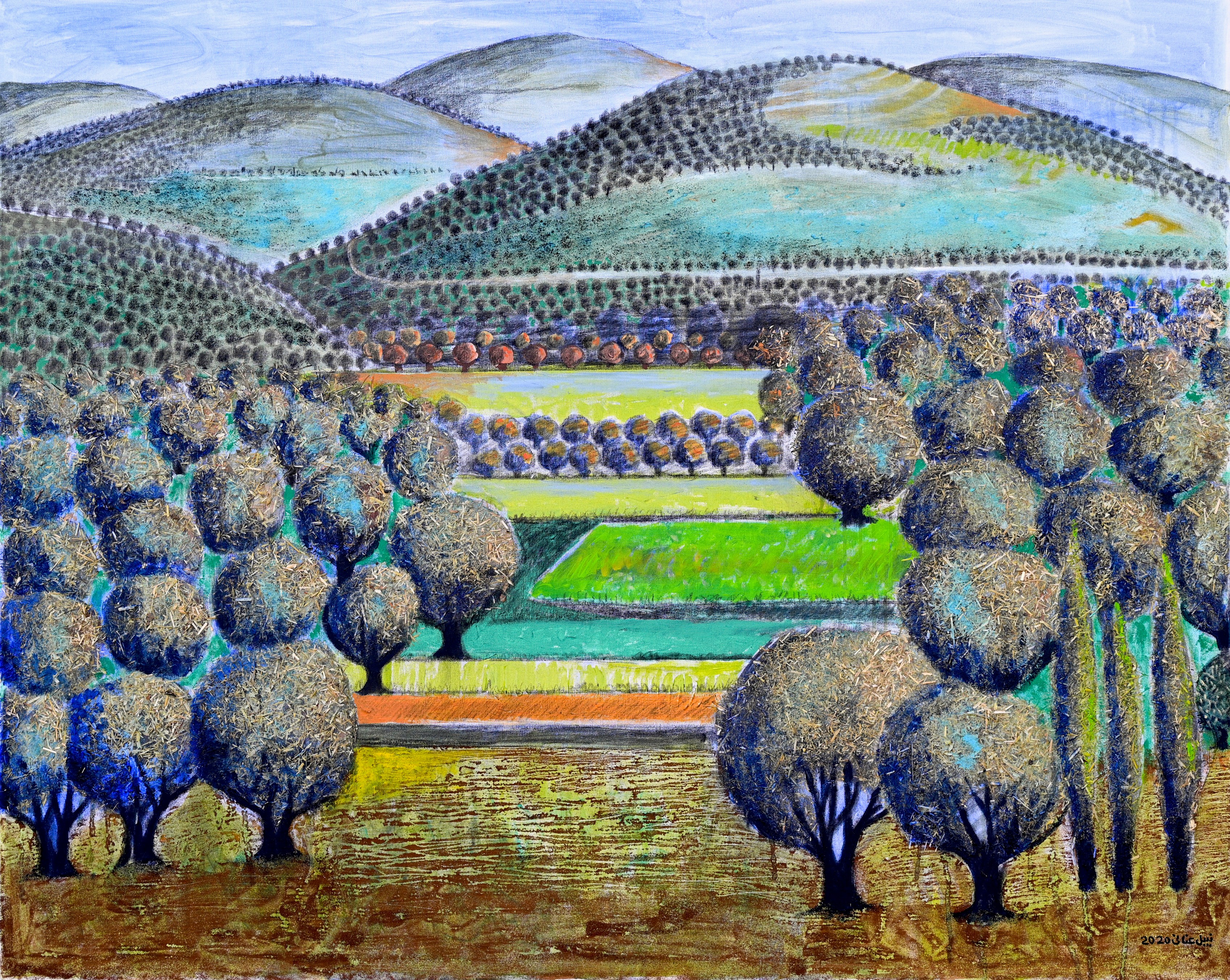
![Palestinians mourned the victims of an Israeli strike on Deir al-Balah [Getty]](/sites/default/files/styles/image_684x385/public/2024-11/GettyImages-2182362043.jpg?h=199d8c1f&itok=xSHZFbmc)


![The law could be enforced against teachers without prior notice [Getty]](/sites/default/files/styles/image_684x385/public/2178740715.jpeg?h=a5f2f23a&itok=hnqrCS4x)
 Follow the Middle East's top stories in English at The New Arab on Google News
Follow the Middle East's top stories in English at The New Arab on Google News
